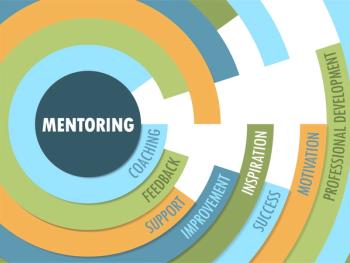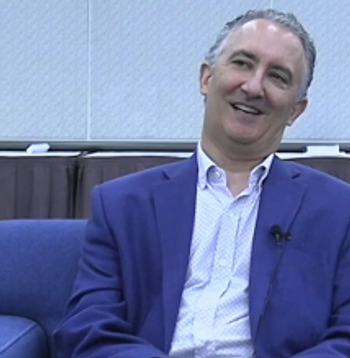
- Vol 34 No 12
- Volume 34
- Issue 12
Public Comment Period Opens for First Set of New Proposals to Update DSM-5
Advances in digital publishing that allow instantaneous dissemination of changes at minimal cost have paved the way towards the adoption of a continuous improvement model for DSM, in which revisions are pegged to specific scientific advances.
NewsBrief
The approach that has been used for revising the
Advances in digital publishing that allow instantaneous dissemination of changes at minimal cost have paved the way toward the adoption of a continuous improvement model for DSM, in which revisions are pegged to specific scientific advances. Thus, rather than waiting until the next wholesale revision to implement a clinically useful change (such as incorporating a clinically validated biomarker into the definition of a disorder), such a change could be put into effect as soon as it has been determined that it is diagnostically advantageous to do so. Moreover, implementing a continuous data-driven approach has the added advantage of discouraging changes that are not well supported by empirical evidence.
It is expected that most submissions will originate from interested persons who are external to the APA committee overseeing the DSM revision process (eg, psychiatric researchers, individual clinicians). This is in marked contrast to the way prior DSM revisions were done, during which proposals were drafted by DSM workgroup members who were also responsible for providing supportive literature reviews and data re-analyses.
A new DSM web portal (
www.dsm5.org
) was set up by the APA at the beginning of this year to field proposals for changes to DSM-5. Proposals must be accompanied by supportive information including the reasons for the change and, depending on the nature of the proposal, data documenting improvements in validity across a range of validators, evidence of reliability and clinical utility, and a consideration of potential deleterious consequences associated with the proposed change.
This new continuous revision process is being overseen by a Steering Committee (analogous to the DSM Task Force). Five standing Review Committees, with about 6 members each, will work with the Steering Committee to consider the evidence in support of the proposed change. Proposals submitted to the DSM web portal will first be reviewed by the Steering Committee, which will refer the proposal to the appropriate review committee if it appears that the evidence for the proposal is substantially likely to meet the criteria for approval.
The Review Committee will undertake whatever additional investigation might be needed, such as consultation with relevant experts. It will then forward the reviewed proposal back to the Steering Committee to decide whether the proposal is suitable to be posted for public comment.
If the Steering Committee determines that the proposal has met the criteria for approval, it will submit the proposal and a summary of the public comments for review by the Board of Trustees of the APA. Once approved, changes will be publicized by the APA and digital versions of the manual will be updated to reflect the change.
The DSM-5 web portal has identified 3 types of proposals that require substantial empirical support, each with explicit criteria regarding the type of evidence that is expected to be submitted. In general, proposals should include a thorough review of the relevant literature and the results of any secondary data analyses conducted by those making the proposal.
→ Type 1 proposals involve changes to an existing diagnostic criteria set that purport to markedly improve the validity, reliability, or clinical utility of a criteria set, or to substantially reduce identified deleterious consequences
→ Type 2 proposals involve the addition of a new diagnostic category, subtype, or specifier
→ Type 3 proposals entail deleting an existing category or subtype or specifier
Proposals involving corrections and clarifications of existing criteria that do not require empirical support (type 4 proposals) are being considered on an expedited basis by a subcommittee of the Steering Committee. Included here are instances of lack of clarity or ambiguity in the meaning of the wording of criteria or text; inconsistencies or contradictions within the text or criteria (eg, diagnostic criteria that conflict with corresponding descriptions in the text); and errors of omission or inadvertent inclusion.
The first set of proposed changes to DSM-5 since the web portal was opened for submissions are now being posted for public comment on the DSM-5 web site, with comments being accepted from November 22, 2017 until December 22, 2017.
1 The first proposal concerns the ICD-10-CM diagnostic codes that apply to situations in which in a patient taking a medication, which is capable of causing physiological dependence, that is being taken as prescribed (ie, not abused), a withdrawal syndrome in the context of stopping the medication develops. The ICD-10-CM codes currently listed in DSM-5 for the categories of Opioid Withdrawal, Sedative, Hypnotic, or Anxiolytic Withdrawal, Cannabis Withdrawal, and Stimulant Withdrawal apply only to cases of withdrawal that develop in the context of a diagnosis of a substance use disorder. This proposal involves a change to the coding notes for these conditions so that they include the ICD-10-CM codes, which apply to cases of withdrawal that occur in the absence of a substance use disorder.
2 The second proposed change involves the definitions of Other/Unspecified Depressive Disorder and Other/Unspecified Anxiety Disorder, categories respectively reserved for cases in which the patient presents with depressive (or anxiety) symptoms that do not meet diagnostic criteria for any of the specific depressive disorders (or anxiety disorders). Since DSM-III, patients who present with mood or anxiety symptoms that do not meet criteria for one of the specified DSM disorders receive a diagnosis of either an Adjustment Disorder (if there is an identified causative psychosocial stressor) or the appropriate depressive or anxiety residual category (eg, Atypical Depression in DSM-III, Depressive Disorder NOS in DSM-III-R and DSM-IV, and Other/Unspecified Depressive Disorder in DSM-5). To make Adjustment Disorder take precedence over the residual categories, the definition of the residual category must indicate that the residual category NOT be diagnosed if the criteria are met for an Adjustment Disorder. This exclusion for Adjustment Disorder, inadvertently omitted from DSM-5, has been added.
3 The third proposal applies to situations in which a patient’s response to exposure to a traumatic stressor does not meet criteria for PTSD. According to DSM-5, if the duration of the symptomatic response lasted 6 months or less, the diagnosis should be Adjustment Disorder. If the symptoms persist for more than 6 months, however, the Adjustment Disorder diagnosis no longer applies, since the 6-month limit on duration has been exceeded. Such cases should be diagnosed instead as Other Trauma- and Stressor-related Disorder. To clarify that this is the correct diagnosis for such scenarios, the following example has been added to the definition of Other Specified Trauma- and Stressor-related Disorder: “Persistent response to trauma with PTSD-like symptoms (ie, symptoms occurring in response to a traumatic event that fall short of the diagnostic threshold for PTSD and that persist for longer than 6 months).”
4 The fourth proposal corrects an error in the hallucinations dimension that is a component of the Clinician-Rated Dimensions of Psychotic Symptom Severity scale included in DSM-5 Section III (“Emerging Measures and Models”). The anchor points for the hallucination severity dimension incorrectly focus exclusively on the impact of voices on the patient, when it should instead include all types of hallucinations.
5 The final proposal corrects an unintended discrepancy between the wording of the stressor criterion (criterion A) in Posttraumatic Stress Disorder and Acute Stress Disorder. Criterion A in PTSD requires “exposure to actual or threatened death, serious injury, or sexual violence,” whereas criterion A in Acute Stress Disorder includes “exposure to actual or threatened death, serious injury, or sexual violation” (italics added). The correct wording for both versions of criterion A is “exposure to . . . sexual violence.”
This article was originally posted on 11/16/17 and has since been updated.
Articles in this issue
about 8 years ago
Technological Ventures Offer New Hope for the Future of Psychiatryabout 8 years ago
Telepsychiatry-Based Culturally Sensitive Collaborative Treatmentabout 8 years ago
Introduction: Innovations to Improve Mental Health Outcomesabout 8 years ago
Leveraging Smartphones in Patient Careabout 8 years ago
THE QUIZ/Fibromyalgiaabout 8 years ago
Measuring Up on Mental Health?about 8 years ago
The Best and Not So Great Articles of 2017about 8 years ago
Stress, Neural Plasticity, and Major Depressionabout 8 years ago
Wound Healingabout 8 years ago
Strategies and Solutions for Switching Antidepressant MedicationsNewsletter
Receive trusted psychiatric news, expert analysis, and clinical insights — subscribe today to support your practice and your patients.

















